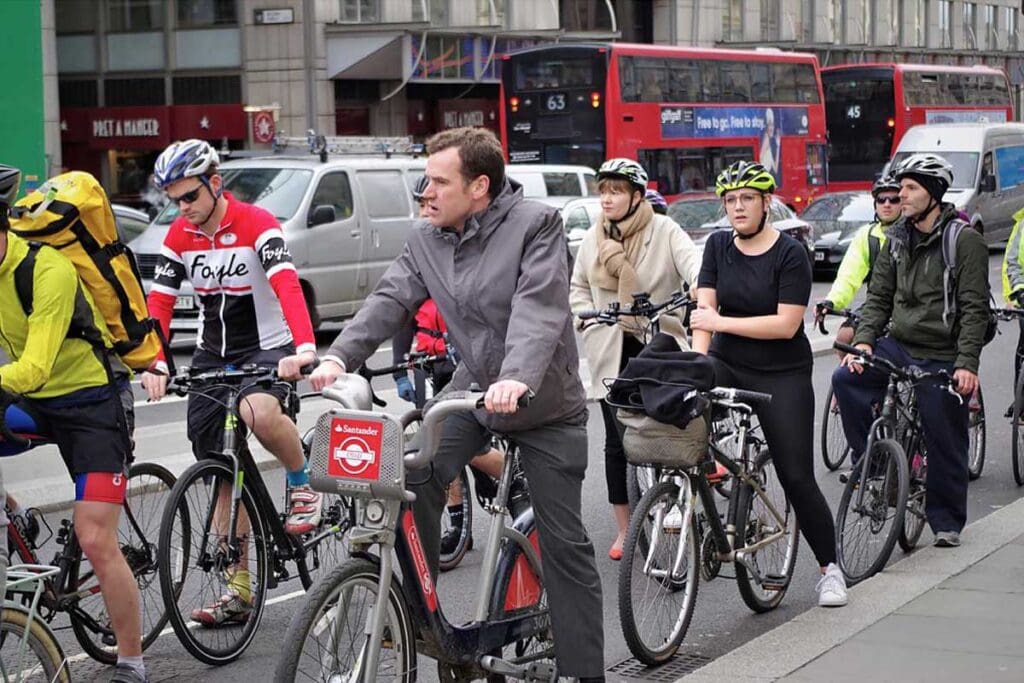WeRide Pushing Transport Minister for E-Bike Salary Packaging

Canberra, ACT
Active transport lobbyists will again push for salary packaging assistance and other financial purchase incentives to be extended to e-bikes – similar to provisions recently introduced for electric cars in Australia – when WeRide Australia officials meet with the Federal Minister for Transport and Infrastructure, Catherine King, next Thursday.
WeRide Australia executive officer Peter Bourke, who will attend the meeting, said bicycle advocates simply wanted e-bikes and e-cargo bikes to have the same assistance provisions introduced by the Federal Government last year to encourage greater uptake of electric cars.
“The government has previously rejected the idea but clearly stated that cars were part of their pre-election promising and they were not extending to areas beyond those promises,” Peter said.
“Now they’ve achieved what they promised during the campaign, at least in this space, we believe it’s an opportunity to look outside their initial goals and consider what other solutions are out there.
“We know even if every single vehicle purchased from today is an electric car, we will not get anywhere near the emission reduction goals the government has signed up to for the transport section. We’re saying electric cars are part of the solution but they are not the complete solution.
“Anyone in the bicycle sector is well aware of the benefits of the bicycle, whether it’s the health benefits and reducing congestion but right now we’re talking about emissions reduction. The transport sector needs to do some heavy lifting in terms of reduction of emissions and e-bikes are certainly part of it, so they should be considered the same way at e-cars when it comes to incentives for more people to buy them.”
He said those incentives should include direct assistance, such as rebates, as well as salary packaging similar to novated leases already available for cars.
“Examples around the world, such as the Cycle to Work scheme in the UK, have identified just how receptive community members are to packaging bikes,” Peter said.
“In the UK, 40% of people who took out a bike through the Cycle to Work scheme hadn’t been considering buying a bike and 40% were women. It simply makes bike riding more attractive.”
WeRide Australia’s delegation to the 23rd March meeting, which will be led by its Director – National Advocacy, Stephen Hodge, will also call on the Federal Government to give greater emphasis to active transport infrastructure.
Peter said: “At the moment, the States and local government are certainly do the heavy lifting.
“Of the Federal transport budget, which is considerable, we believe there should be a sizeable proportion directed to active transport.
“The expectation is much of that would go through State and Local Government but there are also opportunities through major transport and infrastructure projects that should include active transport though a positive provisions structure.”
He said, for example, the construction of rail services to the new Western Sydney International (Nancy-Bird Walton) Airport at Badgerys Creek should include provision for active transport.
Peter said the Federal Government has stated much of the general transport funding it currently gives to State and local government can be used for active transport but those recipients make the choice to spend it on that purpose.
“However, the Federal Government holds the purse strings and it could put in guidelines that would indicate there needs to be some of it spent on active transport,” he said.
“This meeting will also help us identify the government’s potential appetite to support active transport and where its interests might lie.”
Incentives Tracker
US-based enterprises Micromobility Industries and Ride Review have launched a new tool to help people identify and choose between available financial incentives to help purchase small electric vehicles such as e-bikes, mopeds and scooters.
The Micromobility Global Incentives and Subsidy Tracker is a database of government incentives and subsidies in more than 30 countries.
It provides up-to-date information about more than 400 government incentives and subsidies for small electric vehicles, allowing users to easily compare and select the best options for them. The tool also includes information on associated regulations and policies in each country, and links to relevant government websites.
Small electric vehicles have seen a surge in popularity in recent years as more people look for sustainable, health oriented, enjoyable and cost-effective modes of transportation. However, the upfront costs of these vehicles can often be a barrier for many individuals. This is where government incentives and subsidies can play a crucial role in encouraging adoption and supporting sustainable mobility.
Micromobility Industries and Ride Review CEO James Gross said: “The first challenge is people don’t know these incentives might be available to them and the second challenge is that many government websites are hard to parse and understand.
“By providing a centralised database of information on incentives and subsidies for small electric vehicles, the tracker will help individuals make more informed decisions. It will also support policymakers and industry stakeholders in understanding the landscape of incentives and subsidies for small electric vehicles, and how they can be improved to better support sustainable mobility.”
